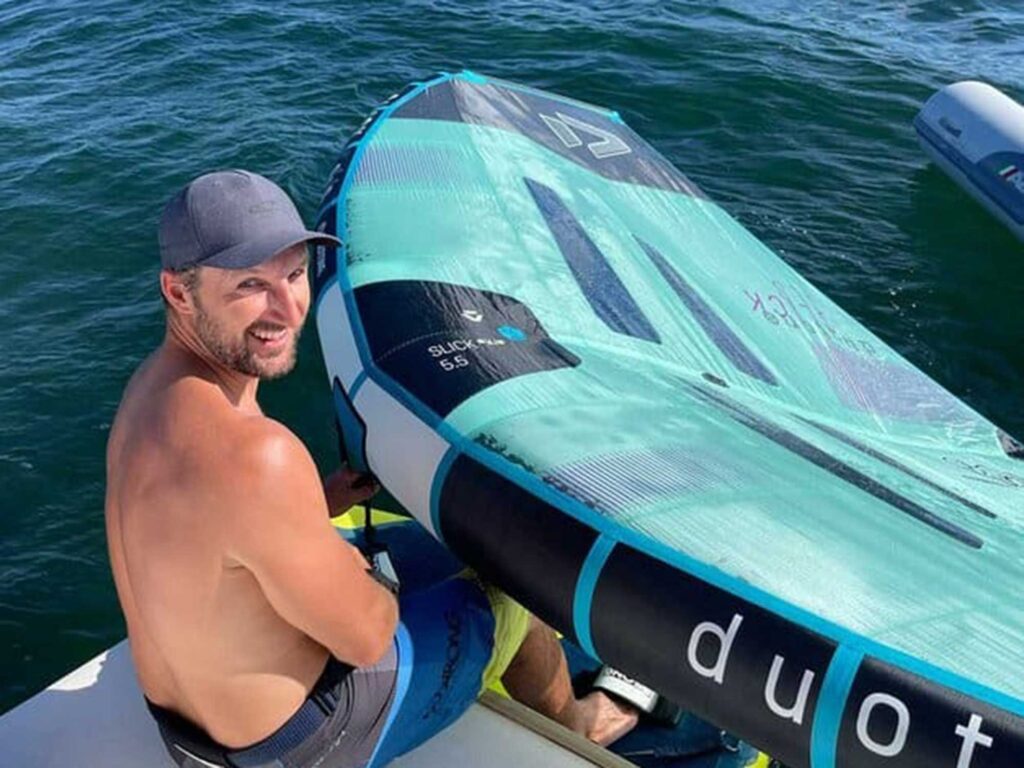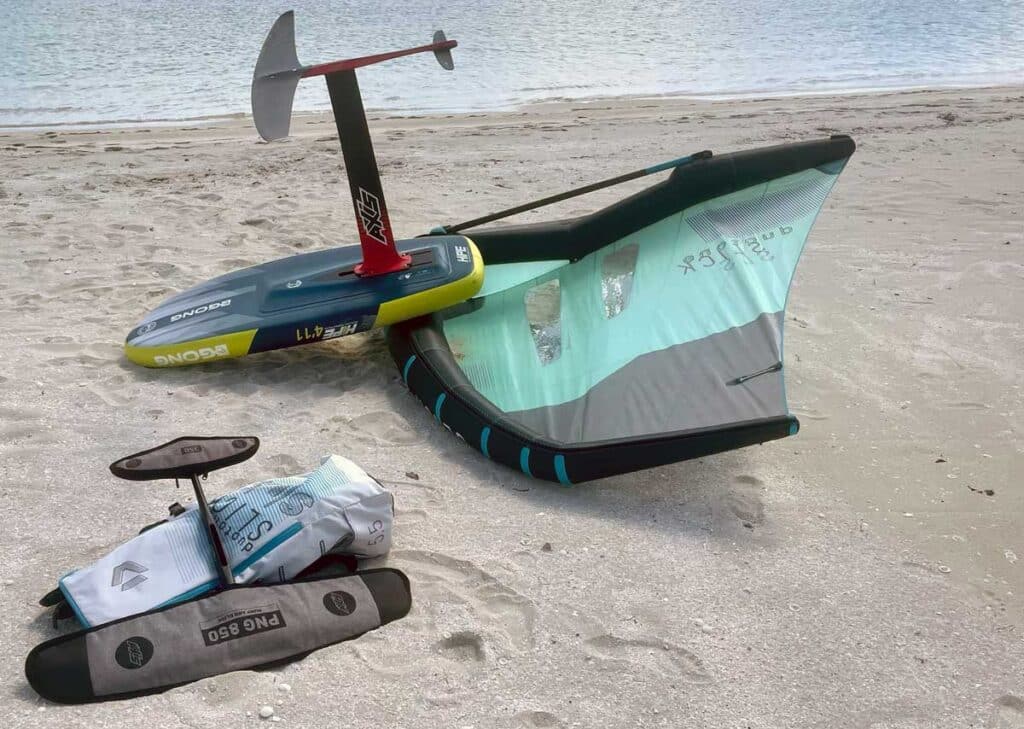
Last year, my family and friends took a welcome break from the racing circuit to explore the Abacos Sea in the Bahamas onboard a Sunsail bareboat catamaran. Like any family outing this was supposed to be all about relaxing and recalibrating, but those who know me know I’m not one to sit around and twiddle my thumbs. Nope. For this family adventure I made sure to bring my wingfoiling gear, and I’m glad I did as I was rewarded with many days of beautiful flat-water fun straight from the back of the yacht. As this was my first time on a charter catamaran with wing gear, I did learn a few new things that will make me better prepared next time, so here are some tips to help you get the most out of your wing foiling adventure trips.
Travel light
Traveling with massive bags can add extra anxiety and cost to the start and end of a holiday, not to mention taking up valuable space on board whatever yacht you’re on, so consider investing in an inflatable board. I have a board made by French company Gong, which inflates to 20 psi and packs down into a normal size travel bag. I barely notice the difference over a traditional hard board. I have traveled several times with a hard board, but they’re pretty unwieldy and you’ll get charged oversized bag fees both ways. Not to mention, there’s a good chance it’ll get dinged somewhere along the way.
I also normally use a 1.25-meter wing boom, so for traveling, I cut mine in half and added a smaller piece of carbon tube inside at the join so it fits easily into the bag too.
Also, don’t tell the airline it’s a surfboard. Generally, they like to charge you extra for a surfboard but if you say they’re golf clubs it’s cheaper or even free. Armstrong even makes a board bag with “Golf” written on it.
Check the forecast and take only what you need. If you’re heading to the Caribbean, chances of using your 3-meter wing are pretty slim so save the space.
I haven’t tried one yet, but they do make small travel pumps or even electric ones that plug into a USB socket. This could be another great space saver.

Launch away
I rigged up everything on the bow tramp of the Sunsail Catamaran, tied all the leashes together, tossed them overboard and walked the leash back to the stern. When launching, I had the wing in my hand, pushed the board a meter or so away from the boat and jumped on! The first few attempts didn’t go so well, but I eventually realized that there was a big wind shadow for the first few meters behind the boat. The situation is a similar story for coming back to the transom when you’ve finished. It’s easy to underestimate how little wind there is at the back, so you’ll glide toward the stern for a long way. It’s best to consciously touch the board down and do the last few meters with the board in the water. This also means you’re less likely to fall backward onto the transom. One other option is to have the tender on a long tether off the transom and stop with a seat on the nice and bouncy tubes. The sensible thing would be to stop well away from the boat and swim your gear back to the ladder, but we all know that’s not going to happen!
Lash it down
Triple check you’ve got everything in your bag before you leave because the chances of getting spares on your trip are low. Also, make sure you tie everything down once you’ve finished or are transiting between anchorages because you don’t want a storm to come through in the night and blow your board away…which might have happened to me on my last trip.









